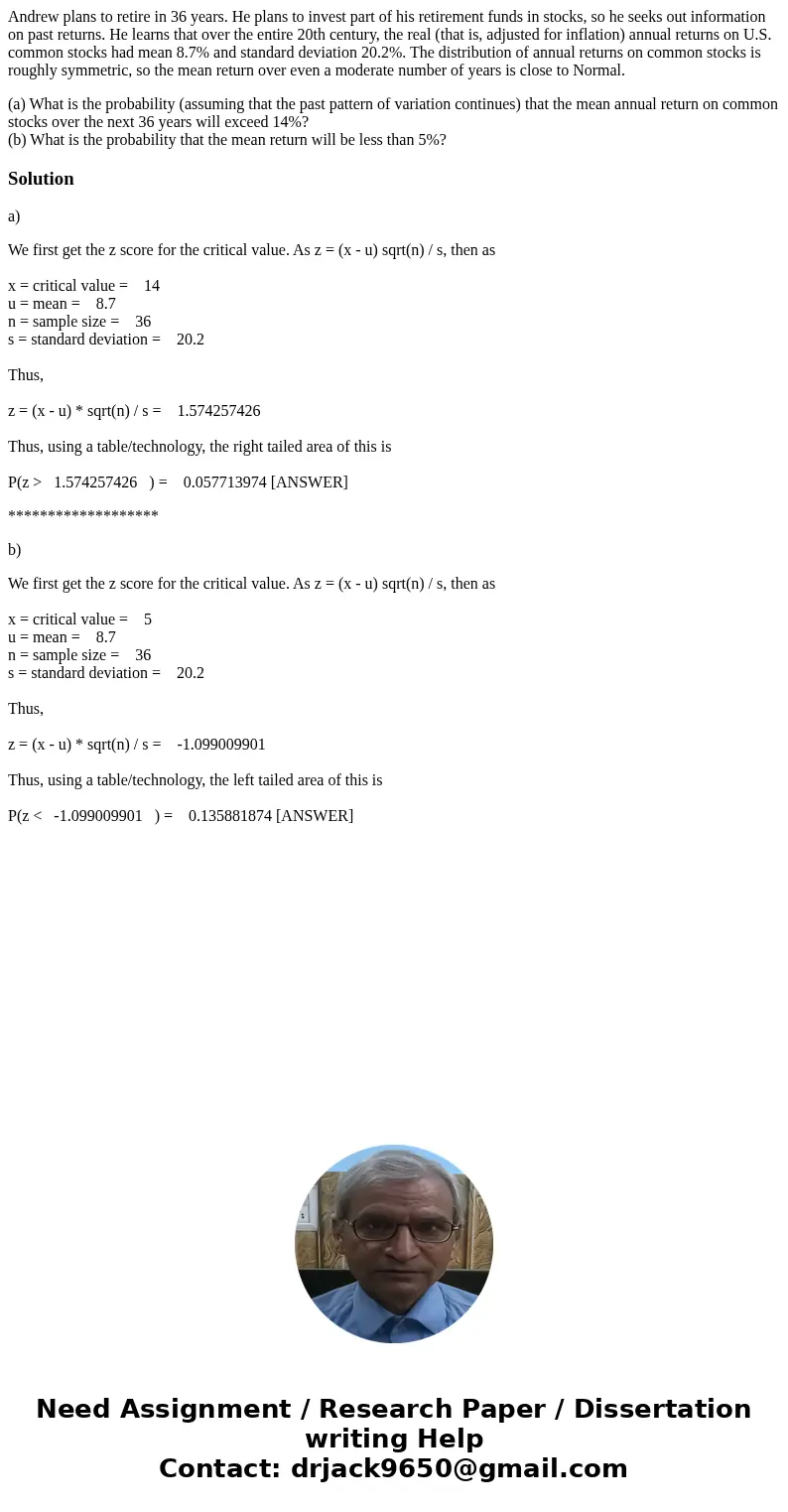Andrew plans to retire in 36 years He plans to invest part o
Andrew plans to retire in 36 years. He plans to invest part of his retirement funds in stocks, so he seeks out information on past returns. He learns that over the entire 20th century, the real (that is, adjusted for inflation) annual returns on U.S. common stocks had mean 8.7% and standard deviation 20.2%. The distribution of annual returns on common stocks is roughly symmetric, so the mean return over even a moderate number of years is close to Normal.
(a) What is the probability (assuming that the past pattern of variation continues) that the mean annual return on common stocks over the next 36 years will exceed 14%?
(b) What is the probability that the mean return will be less than 5%?
Solution
a)
We first get the z score for the critical value. As z = (x - u) sqrt(n) / s, then as
x = critical value = 14
u = mean = 8.7
n = sample size = 36
s = standard deviation = 20.2
Thus,
z = (x - u) * sqrt(n) / s = 1.574257426
Thus, using a table/technology, the right tailed area of this is
P(z > 1.574257426 ) = 0.057713974 [ANSWER]
*******************
b)
We first get the z score for the critical value. As z = (x - u) sqrt(n) / s, then as
x = critical value = 5
u = mean = 8.7
n = sample size = 36
s = standard deviation = 20.2
Thus,
z = (x - u) * sqrt(n) / s = -1.099009901
Thus, using a table/technology, the left tailed area of this is
P(z < -1.099009901 ) = 0.135881874 [ANSWER]

 Homework Sourse
Homework Sourse